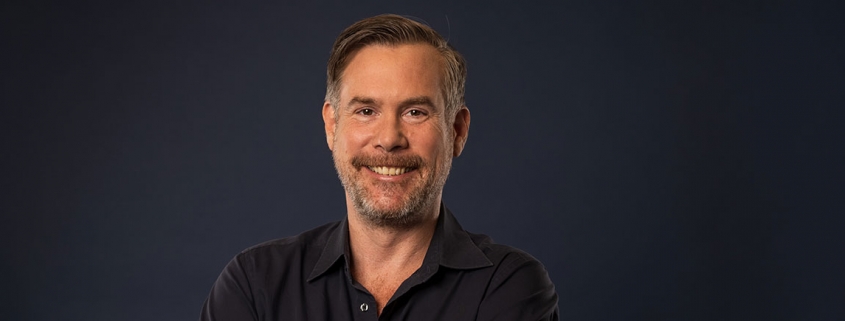How can I use the metaverse for my brand? How will this new digital universe transform the customer experience? And what exactly does the term ‘metaverse’ even mean? Strategy expert Eva Lihotzky provides an overview and four recommendations for action for brands.
It was Neal Stephenson who coined the term ‘metaverse’ in his breakthrough sci-fi novel ‘Snow Crash’ back in 1992. His visionary story is about a pizza delivery guy who, as a hacker, roams an immersive, virtual world by night. Thirty years later, the idea of a three-dimensional, immersive online environment where people interact with each other in real time and can create, buy and sell things is no longer just the stuff of sci-fi novels. The potential of social and commercial interactions in a virtualised setting is huge, and investments in technologies and newly created virtual spaces have increased significantly over the past few years. After all, technologists, companies and investors already believe that the metaverse will become a stage of the future and therefore a huge source of revenue. A study by financial service provider Citigroup confirms this: the possible business potential of virtual worlds is expected to reach up to 13 billion US dollars by the year 2030.
The metaverse – more than just a singular space
But what is the metaverse exactly? As well as 173,000,000 hits, my first Google search brings up various definitions. However, most of them have one thing in common: they understand the term ‘metaverse’ to mean more than just a single technology or end state. Rather, they refer to the convergence of several separate technologies, which in the coming years will all gradually reach market maturity – and therefore pave the way for the Web3 era. As well as the increasing use of blockchain and interactive technologies such as virtual reality (VR), augmented reality (AR) and mixed reality (MR), the focus is on Internet of Things (IoT) applications (such as the use of sensors and network communication solutions), computing technology (like 5G and 6G networks) and cloud computing, artificial intelligence (AI) and gaming technologies.
Virtual spaces are resulting in new meeting places
The smart combination of these technologies can create the experience of an immersive, three-dimensional environment where consumers can interact with one another, with a particular company and with its individual surroundings as if they were together in the same room. In the future, this space can have several attributes. First of all, we can assume that both the physical and the digital-virtual worlds will be integrated into the user experience and merge into one. Secondly, reactions and social interactions are enabled there, meaning that there is an ongoing exchange between the consumers, companies, influencers and their avatars. Thirdly, creativity, product definition and product optimisation will be boundless in the space and, ideally, will also be interoperable between individual spaces, resulting in entirely new contact opportunities, communication channels and business models. Fourthly, virtual spaces are available at all times and can be defined and shaped by the users themselves.
Next-level customer experiences
As a result, real-time communication and personalisation will become an even more important differentiating feature for companies that enter into a dialogue with their consumers in the metaverse. This is why the concept of the customer experience needs to be rethought, extended and the communication and interaction speed of brands needs to be raised to the next level. Because as well as the existing touchpoints that companies continue to use when communicating with their customers, there are now touchpoints in the metaverse or virtual spaces to consider as well. This will lead to many new interaction points that companies should take on board in their brand and communication strategy.
The Hitchhiker’s Guide to Metaverse Experiences
Brands are therefore advised to follow these four recommended courses of action:
- Identify metaverse potential and implement a long-term strategy
Companies should determine the metaverse potential that is relevant for their business and incorporate a metaverse strategy into their existing communication and marketing strategies. These should be flexible enough to allow them to react quickly to ongoing technological advances and, in turn, to respond to changing customer requirements and behaviours. - Incorporate relevant technologies flexibly and successively
It is the aforementioned technologies that make virtual spaces possible in the first place. However, not all technologies are needed for every use case at the same time. Instead, companies will use different technology combinations at different touchpoints. This makes it all the more important to ensure we have the relevant technologies ready for use and can adapt them to customer behaviour along the customer journey. In the future, a diversified technology architecture that can be flexibly applied to the corresponding requirement will be crucial to a company’s success in the metaverse. - Intensify consumer behaviour and emotions in virtual spaces
A compelling customer experience will also remain a differentiating factor in the metaverse. This being the case, companies should concentrate on also creating consistent and engrossing experiences in virtual spaces that are able to maximise the benefits of immersivity and interactivity. By skilfully combining the relevant technologies – such as AR, sensors and online and offline combinations – brands can approach their consumers through new angles. They can also enable them to identify with products more through ‘tangible’ storytelling, thereby exerting a positive influence on purchasing behaviour and customer loyalty. - Shift the focus onto trust, authenticity and responsibility
Trust and security will come even more to the fore when defining the customer experience in these new virtual spaces. This is because it will only then be possible to gain acceptance of the newly created experiences that consumers will have with companies in their respective immersive interactions. The more the lines are blurred between the physical and virtual worlds of the consumers, the more important existing considerations – and concerns – relating to data protection, security, IP protection or accessibility will be. So it is up to companies themselves to take a responsible approach and make their products and services inclusive.
Brave new worlds
Technological advances and the resulting immersive spaces are changing the basis of physical and virtual interactions and the way they function. However, we are still a long way off a final definition of how the metaverse will develop further or which gradual developments and functionalities we can expect to see. Even though some of the technologies and building blocks are already in place, the full implementation of immersive, reactive and continuously expanding virtual worlds will take another few years. This is because many of the required technologies will still need time and remain dependent on the progress of other technologies before their capabilities and potential can be used on a wider scale. And even then, they will gradually develop further and set new benchmarks.
But trying to explain what life in the metaverse will be like in the future and how it will affect companies would be rather like asking someone back in 1990 to describe what would become of the internet one day. Perhaps we should just ask Neal Stephenson? After all, the way he envisaged the direction things would take 30 years later was pretty spot on.
This article first appeared in TWELVE, Serviceplan Group’s magazine for brands, media and communication. In the ninth issue, you will find further inspiring articles, essays and interviews by and with prominent guest authors and renowned experts centred around the magazine’s theme „Speed! The Winning Factor in the Digital Age“. The e-paper is available here: www.serviceplan.com/en/lp/twelve/twelve-2023.




